The Rearview Mirror: Hyundai Comes to America
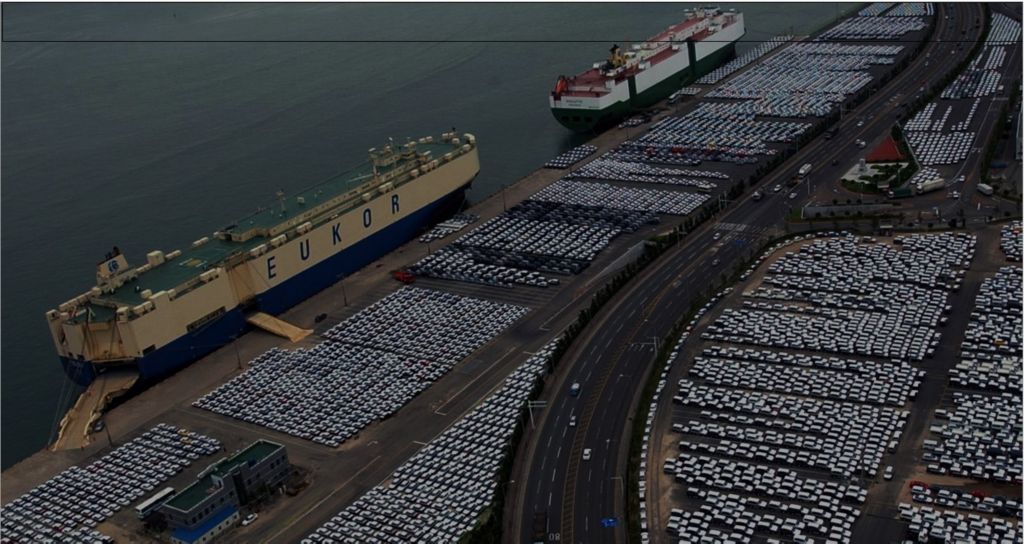
This week in 1986, Hyundai introduced the subcompact Excel to America, a car sold elsewhere also sold as the Hyundai Pony, Hyundai Presto, Hyundai X2, and Mitsubishi Precis.
Sales in the United States reach 168,882 units in its first year, climbing to 253,610 vehicles the following year despite having dealers in only 31 of 50 states. But all hasn’t been smooth sailing for the automaker, despite its current success.
A young automaker’s start
While Hyundai Motor Co. entered the automobile industry in South Korea in 1967, the company’s roots stretch back to 1947 with the formation of the Hyundai Engineering and Construction Co. Its name, derived from the Korean word Hyun, which means modern, and Dai, which denotes to era, certainly seemed apt, as it landed major government contracts that helped build the national transportation infrastructure.
With the launch of the automobile company in 1967, Hyundai’s Ulsan assembly plant was constructed, which dovetailed perfectly with Hyundai Glovis’s global fleet and steelmaking operations. This was a fully integrated automaker from the start.
Hyundai’s first model: a Ford
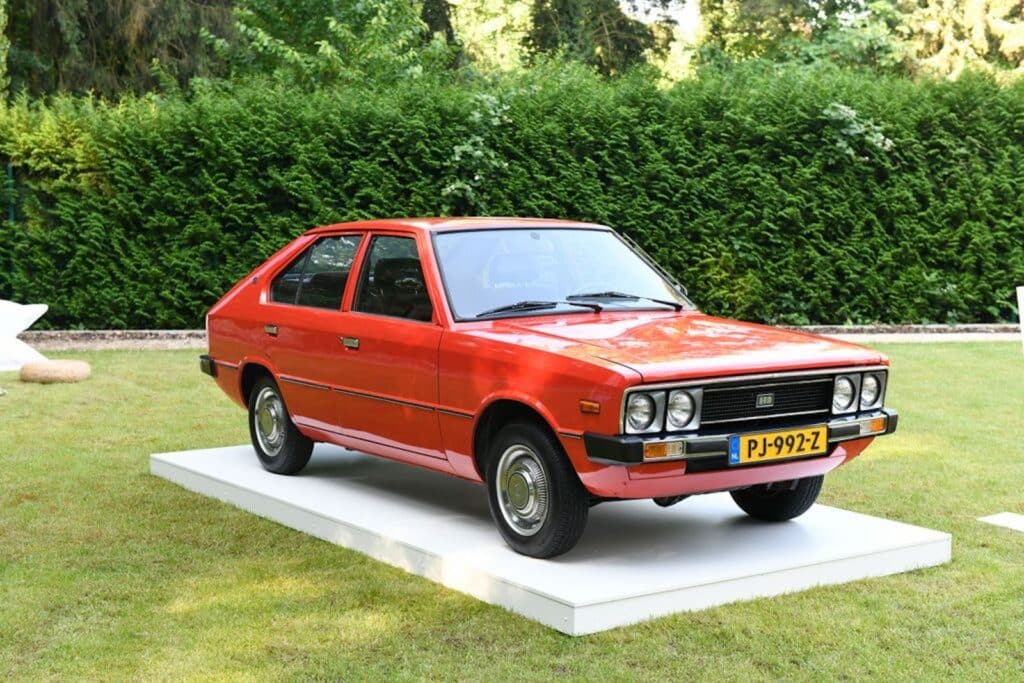
A year after its founding, Hyundai introduced its first model, the Cortina, licensing the rights to assemble the car from the Ford Motor Co. (Hyundai would build five generations of the Cortina through 1983.)
Its success inspired the company to develop its own car. In 1974, Hyundai hired George Turnbull, the former managing director of Austin Morris at British Leyland, who in turn hired six Europeans to help him: a body designer, two chassis designers, two production engineers and a test engineer.
The result debuted at the 1974 Turin Motor Show, the Hyundai Pony. Designed by Giorgetto Giugiaro, this compact rear-wheel drive hatchback went on sale in Chile, Argentina, Colombia and Egypt in 1976, followed by Belgium and the Netherlands in 1978. Greece soon followed.
But when Hyundai began exporting the Pony to Canada in 1984, it set the stage for what was to follow: entry into the American market. It was time for Hyundai to play in the big leagues.
Welcome to America
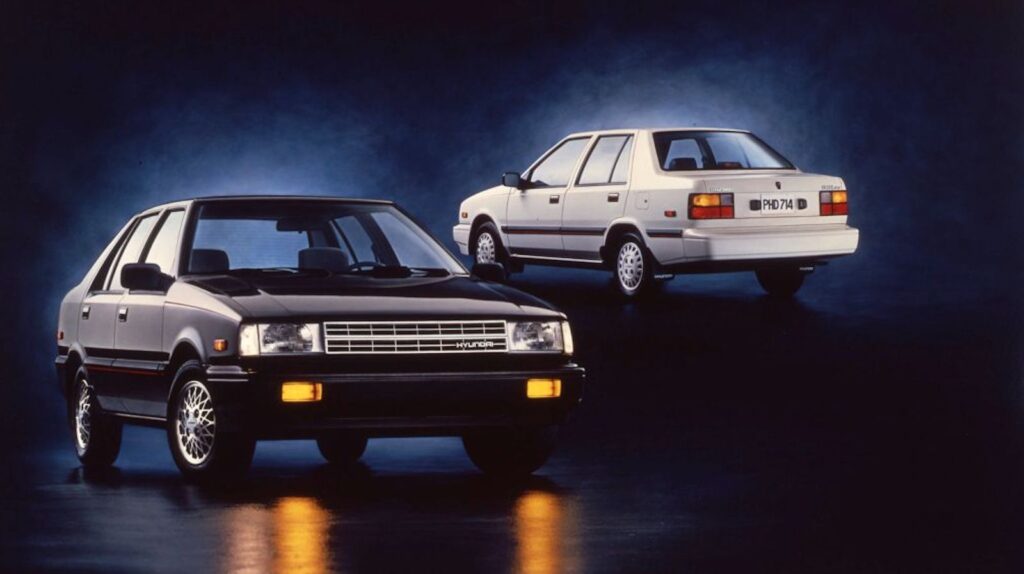
But it was the Hyundai Excel’s entry into the American market that proved transformative. The United States was the world’s largest, and most competitive, car market.
The automaker’s first front-wheel-drive car, the 1986 Hyundai Excel was derived from the Mitsubishi Mirage, and used a SOHC, 1.5-liter 4-cylinder that fed 68 horsepower to the front wheels. At 161 inches long, 63 inches wide and 54 inches tall, it was truly a subcompact in size as well as price. With an MSRP starting at $4,995, at a time when the average new car cost $9,366, it was so inexpensive, some buyers charged it to their credit card.
Sales boomed, with Hyundai sales averaging a record 1,431 units per dealer. Fortune Magazine ranked it the 10th Best Product of 1986. By 1989, Hyundai was expanding its line-up, introducing the Sonata, followed by the Scoupe in 1990 and the Elantra in 1992.
Yet despite the expanding portfolio, Hyundai sales declined as Japanese automakers introduced competing models — ones known for their reliability.
And reliability, or the lack of it, turned out to be a growing problem for Hyundai.
Sales sink as Hyundai’s reputation sours
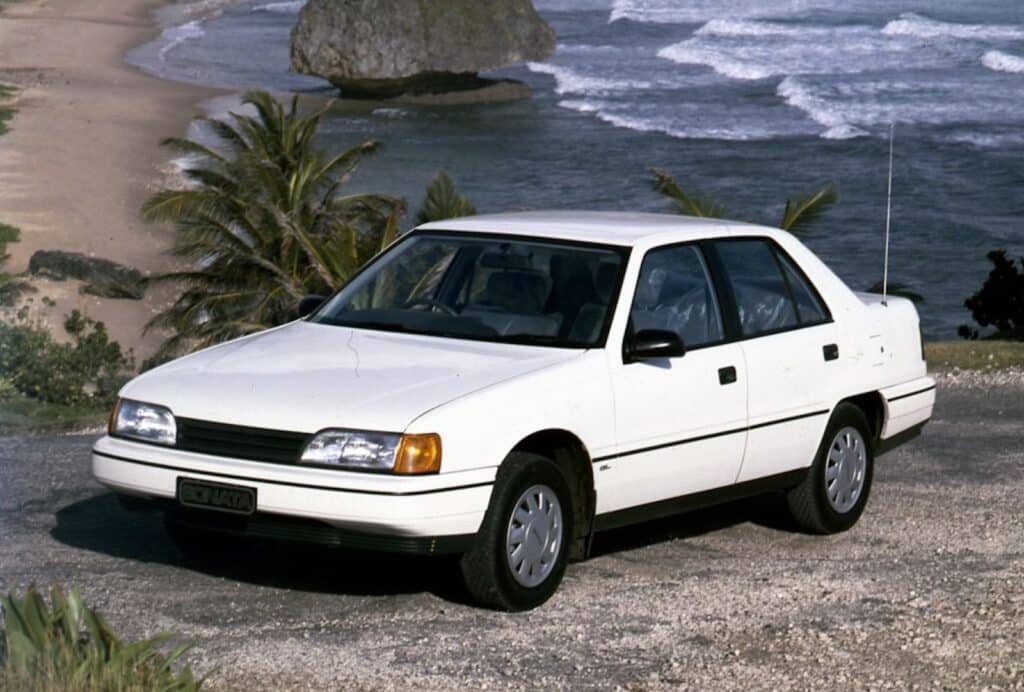
A nasty Christmas gift arrived in late 1991, when Hyundai recalled all 1986-89 Excels and 1987-89 Mitsubishi Precis, which Hyundai built for Mitsubishi. The car that set sales records quickly became a late-night monologue punchline as parts in the engine deteriorated, causing exhaust gases to melt the air filter, which could result in an engine compartment fire. In all, 837,000 Hyundai Excels and 58,000 Mitsubishi Precis models were recalled.
It quickly became the fodder of late-night talk show monologues. “How do you double the value of a Hyundai,” asked Jay Leno. “Fill it with gas.”
To help boost sales, Hyundai boasted of the new 1992 Hyundai Elantra’s scheduled maintenance, along with its two-year/24,000-mile warranty. But if anyone thought Hyundai was giving up, they should know better, as Hyundai opened a $12.2 million port facility in Portland, Oregon in 1990, along with a new 18-acre headquarters site for Hyundai Motor America in Fountain Valley, California.
Then came the 1997 Asian financial collapse, which reshaped the Korean automotive market. With the onset of a global economic slump, the South Korean Won fell dramatically, leading Korean automaker Daewoo to declare bankruptcy. It was snapped up by General Motors. Now, Kia Motors was facing the same prospect, and Ford Motor Co. was circling. Instead, Kia was acquired by Hyundai, becoming part of the Hyundai Motor Group.
Hyundai’s quality began to improve, but few believed it and U.S. sales hovered around 90,000 units annually.
The tide turns
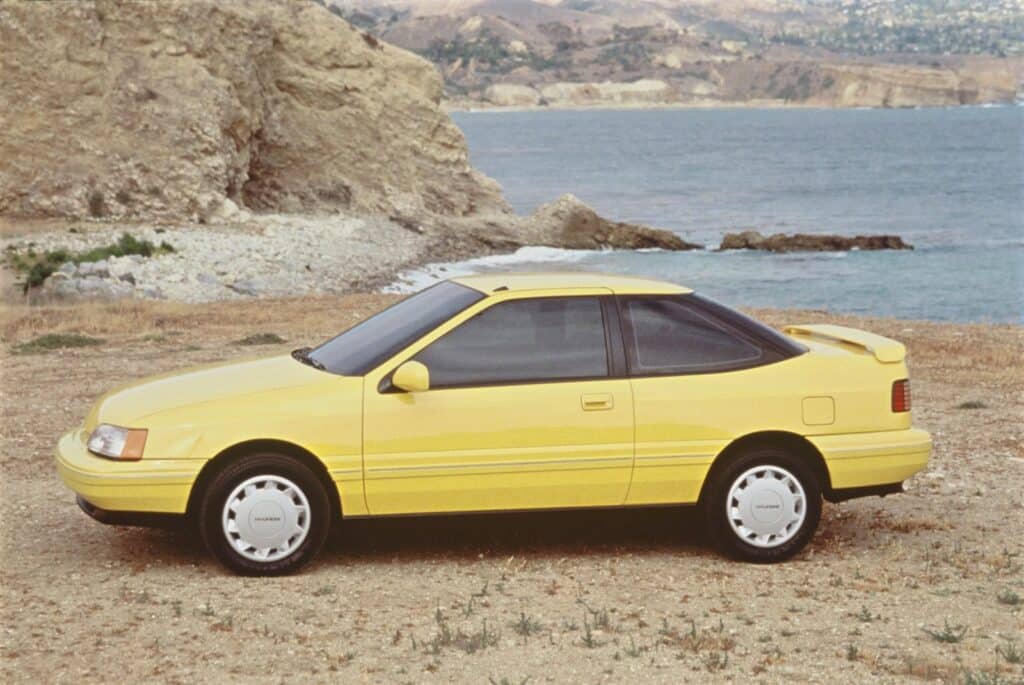
Then in 2001, in an effort to put its money where its mouth was, the Korean automaker introduced the industry’s most generous warranty: bumper-to-bumper coverage and free roadside assistance for five years or 60,000 miles, with powertrain components covered for 10 years or 100,000 miles. It turned the tide. Soon, Kia followed, as the company concentrated on improving its engineering, design and technology.
Hyundai was building good will with ever-better products. By 2009, the automaker had introduced the Hyundai Genesis, becoming the named 2009 Car of the Year at the Detroit international Auto Show.
But as the U.S. economy tanked, forcing GM and Chrysler to file for bankruptcy, Hyundai introduced the Hyundai Assurance program, allowing customers to return a car if they lost a job. The good will continued to grow, and it hasn’t stopped since.
A success story
Today, Hyundai Motor Group, including Hyundai, Kia and Genesis, ranks as the No. 3 OEM in the U.S., based on retail corporate market share, according to S&P Global. S&P credited Hyundai’s success to “the freshness and timeliness of its three U.S. product portfolios, the robust brand loyalties of Kia and Hyundai owners, and high manufacturer loyalty across all three brands.”
The rating agency notes that while the company doesn’t have an iconic product, like the Ford F-150, Toyota Camry or Honda Accord, it has risen from a third-tier player automaker a decade ago into a top OEM today, despite the competition from more than 20 OEMs, 40 brands and 300 models.
And best of all, Hyundai’s no longer an automotive punchline, and it started this week in 1986.
Auto Lovers Land
Comments
Post a Comment